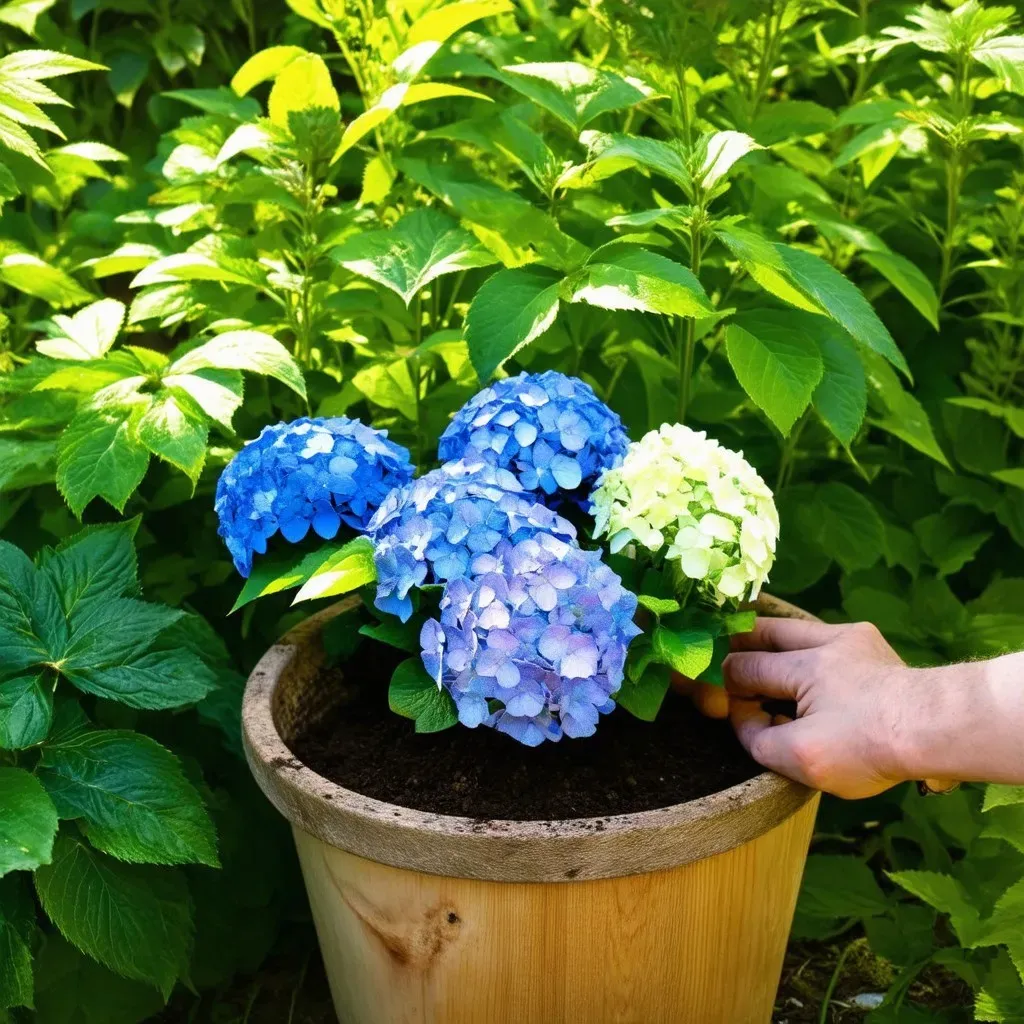When it comes to growing hydrangeas, selecting the best pot for hydrangeas can make all the difference in their health and vibrancy. Using the right container not only supports their growth but also showcases these stunning blooms in the most attractive way possible. Choosing a proper pot means considering factors like size, material, and drainage to ensure your hydrangeas flourish in their new home.
Optimal Pot Size for Hydrangeas
Selecting the right pot size is crucial for the well-being of your hydrangeas. Generally, the container should be at least 18-24 inches in diameter and depth. This dimension allows enough room for roots to expand while preventing the plants from being waterlogged.
Recommended Pot Sizes
| hydrangea Variety | Recommended Pot Size |
|---|---|
| Macrophylla (Bigleaf) | 20-24 inches in diameter |
| Paniculata (PeeGee) | 18-22 inches in diameter |
| Arborescens (Smooth) | 18-20 inches in diameter |
| Quercifolia (Oakleaf) | 20-24 inches in diameter |
| Limelight | 18-20 inches in diameter |

Best Materials for Pots
Choosing the right material for your hydrangea pots will also affect their growth. The three primary materials are ceramic, plastic, and wood. Each has its pros and cons:
Pot Material Comparison
| Material | Pros | Cons |
|---|---|---|
| Ceramic | Attractive, retains moisture well | Heavy, can crack in freezing temps |
| Plastic | Lightweight, affordable | May not retain moisture as well |
| Wood | Natural appearance, provides good drainage | Can rot if not treated properly |
Choosing ceramic pots may be beneficial for their elegance and moisture retention, while wooden pots can provide a rustic feel but require additional care.
Soil Recommendations for Hydrangeas in Pots
Using the right soil is essential for Hydrangea Care in pots. Opt for a well-draining potting mix that retains some moisture without becoming waterlogged.
Ideal Soil Composition
- Peat Moss: Retains moisture
- Perlite or Vermiculite: Provides aeration
- Compost: Enriches nutrients
A good mix would be using a potting soil that contains those components. Generally, a potting mix designed specifically for flowering plants will suffice.

Watering Hydrangeas in Pots
Hydrangeas are known for their love of water, and it is crucial to keep their soil consistently moist. However, the need for frequent watering can vary depending on several factors, including the season, pot material, and environmental conditions.
- Frequency: Water potted hydrangeas thoroughly when the top inch of soil feels dry. This could be every 1-3 days.
- Drainage: Ensure the pot has drainage holes to prevent root rot.
-
Signs of Overwatering:
- Yellowing leaves
- Wilting
Watering Do’s and Don’ts
| Do’s | Don’ts |
|---|---|
| Check soil moisture | Let the pot sit in standing water |
| Use room temperature water | Water in the heat of the day |
| Adjust based on weather | Ignore signs of distress |

Problems with Hydrangeas in Pots
Potted hydrangeas come with their own set of challenges. Here are some common problems and how to address them:
Common Issues
-
Root Rot: Caused by excessive moisture, leading to wilting and brown leaves.
- Solution: Ensure proper drainage and reduce watering.
-
Leaf Yellowing: This could be a sign of nutrient deficiency or overwatering.
- Solution: Test soil drainage and consider fertilizing with a balanced fertilizer.
-
Limited Blooming: Inadequate light or incorrect soil pH can lead to reduced flowers.
- Solution: Place them in a location that receives at least 6 hours of sunlight daily and test the soil pH, aiming for a range of 5.5 to 6.5.
-
Insects and Pests: Crickets, aphids, and mites can infest hydrangeas.
- Solution: Inspect regularly and treat with insecticidal soap if necessary.
Repotting Hydrangeas
Understanding when and how to repot your hydrangeas is essential for their continued growth.
When to Repot
- Every 2-3 years, or when you notice roots bursting out of the bottom of the pot.
- Ideally, repot in early spring before new growth starts.
Steps for Repotting
- Choose the Right Pot: Ensure it’s at least 2 inches wider than the current pot.
- Gently Remove: Take the plant from its current container carefully.
- Trim Roots: If they’re circling, it’s beneficial to trim some roots to encourage new growth.
- Fill with Fresh Soil: Add fresh potting mix around the roots and water thoroughly.

FAQ
What is the best hydrangea for pots?
The Best Hydrangeas for containers include varieties like the PeeGee, Bobo, and various dwarf cultivars. These species tend to have a more compact growth habit, making them ideal for potted gardening.
How long do potted hydrangeas last?
With proper care, potted hydrangeas can live for years. However, some florist varieties have a shorter life and are generally intended for seasonal use.
Can I grow blue hydrangeas in pots?
Absolutely! Blue hydrangeas can thrive in pots if they receive adequate water, have the right soil pH (acidic), and are placed in appropriate lighting.
What is the best soil for hydrangeas in pots?
A good potting mix enriched with organic matter will work best. Look for a mix that provides good drainage while retaining moisture.
For more details about hydrangeas care, visit Proven Winners.

By choosing the best pot for hydrangeas, you set the stage for vibrant blooms and healthy plants. Consider these tips and your hydrangeas will be a stunning highlight of your gardening repertoire!


